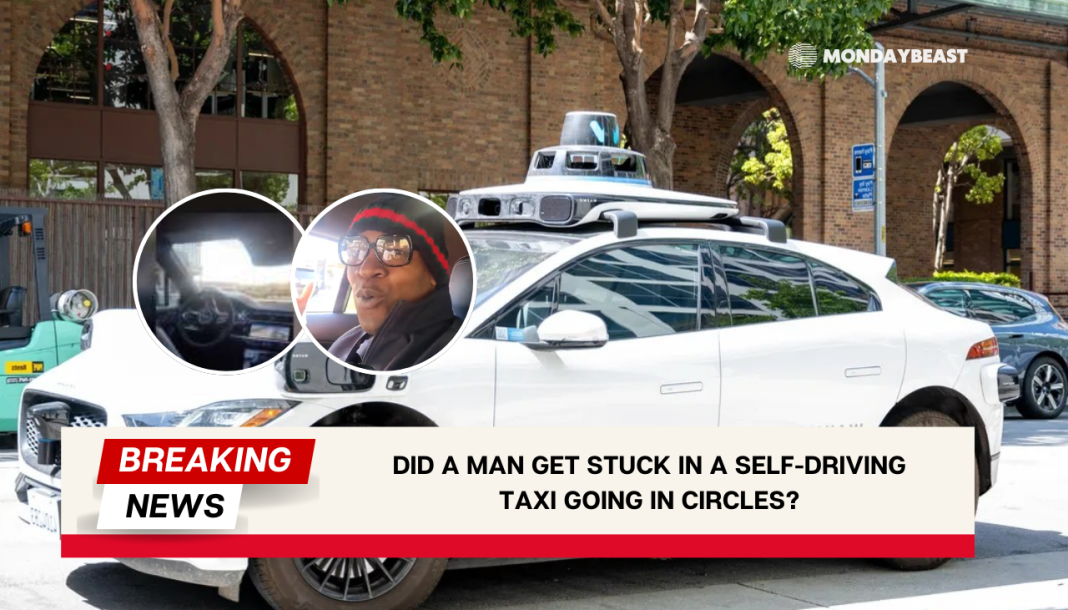A Wild Ride with Waymo
Last week, in a scene straight out of a digital nightmare, a Los Angeles man found himself caught in a self-driving taxi that simply refused to stop driving in circles. Mike Johns, en route back from Scottsdale, Arizona, hopped into a Waymo, hoping for a smooth ride to the airport. Instead, he experienced something that felt more like an amusement park ride than a tech marvel.
As Johns filmed his bizarre journey, he questioned, “Why is this thing going in a circle? I’m getting dizzy!” His bewilderment echoed through the confines of the car. His video quickly went viral, drawing more than two million views. The image of a man trapped in a loop—frustrated and dizzy—resonates deeply in our high-speed world, where tech promises efficiency but sometimes delivers chaos.

Johns’ plight paints a picture of modern life. Imagine needing to catch a critical flight, and instead, you’re circling around a parking lot. That’s where reality collides with technology, leaving users like Johns in limbo. As he waited for a way out, the irony didn’t escape him. He is a tech worker himself, yet technology let him down when he needed it most.
An Impersonal Encounter
On top of everything, Johns was on the phone with customer service as he circled. But instead of immediate assistance, it felt like a distant echo—a disconnect that magnified his sense of isolation. In the age of digital innovation, questions linger. Where does empathy fit into algorithms? Where is the human touch in these transactions?
In his conversation with CBS News Los Angeles, he expressed real frustration. “Where’s the empathy? Where’s the human connection to this?” These sentiments are becoming more common. They reflect a broader dilemma in our digital age. As machines take over, do we lose the personal connections that make experiences meaningful?

For Johns, it was more than mere inconvenience. It was a reminder of how we increasingly interact with human-less systems. The existential questions arise—are we becoming ghosts in our own machines? This desire for connection juxtaposed with the coldness of technology can leave consumers yearning for the warmth of human interaction.
The Tech Response
Finally, after what felt like an eternity, Waymo’s representative managed to gain control of the vehicle. A brief, tense five minutes had passed, but it seemed much longer to Johns. To make matters worse, he received a callous response from the customer service rep.
Waymo later stated that they wouldn’t charge him for the trip. They also mentioned addressing the looping issue with a software update. But critics of self-driving technology may scratch their heads. Was that really enough?

This incident serves as a reminder. Technology is still under construction. How much do we actually trust machines to navigate our lives? Is there a point where the user experience gets sacrificed for innovation? We cling to hope that companies like Waymo will improve, ensuring safety and reliability.
Conclusion and Continuing Concerns
Mike Johns is still waiting for further communication from Waymo. His eagerness for resolution lingers. He amusingly remarked that this experience made him question the strength of human connections within modern technology: “That’s the ghost in the shell, right?”
This incident opens up a broader discussion about the intersection of technology and human needs. In our quest for convenience, we must ask ourselves: How do we maintain the humanity in an increasingly automated world? Are we prepared to navigate the challenges ahead while still holding on to what makes us human? Only time will tell. But one thing is certain: stories like Johns’ will resonate, reminding us why we still need to prioritize compassion in our rapidly evolving digital landscape.




